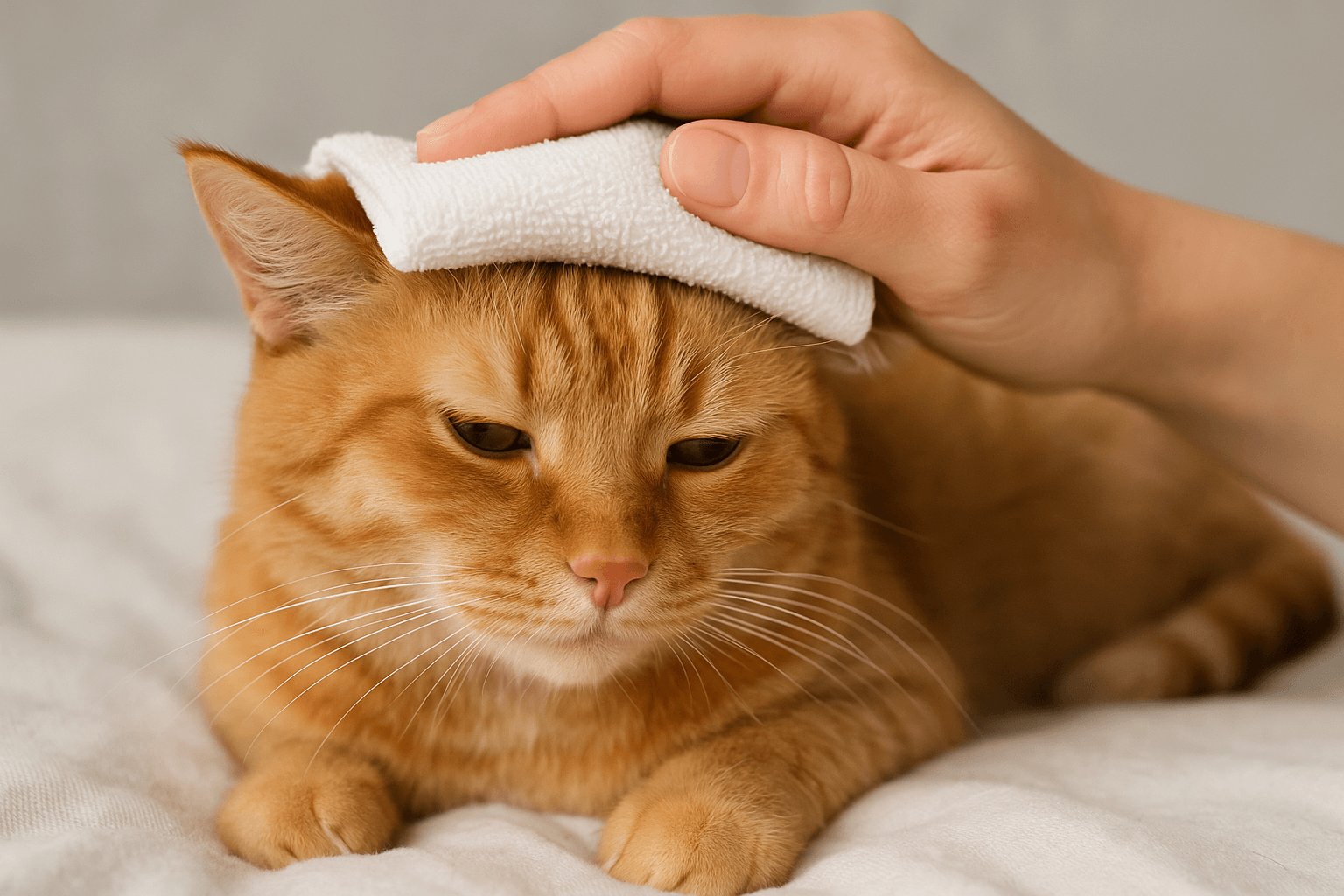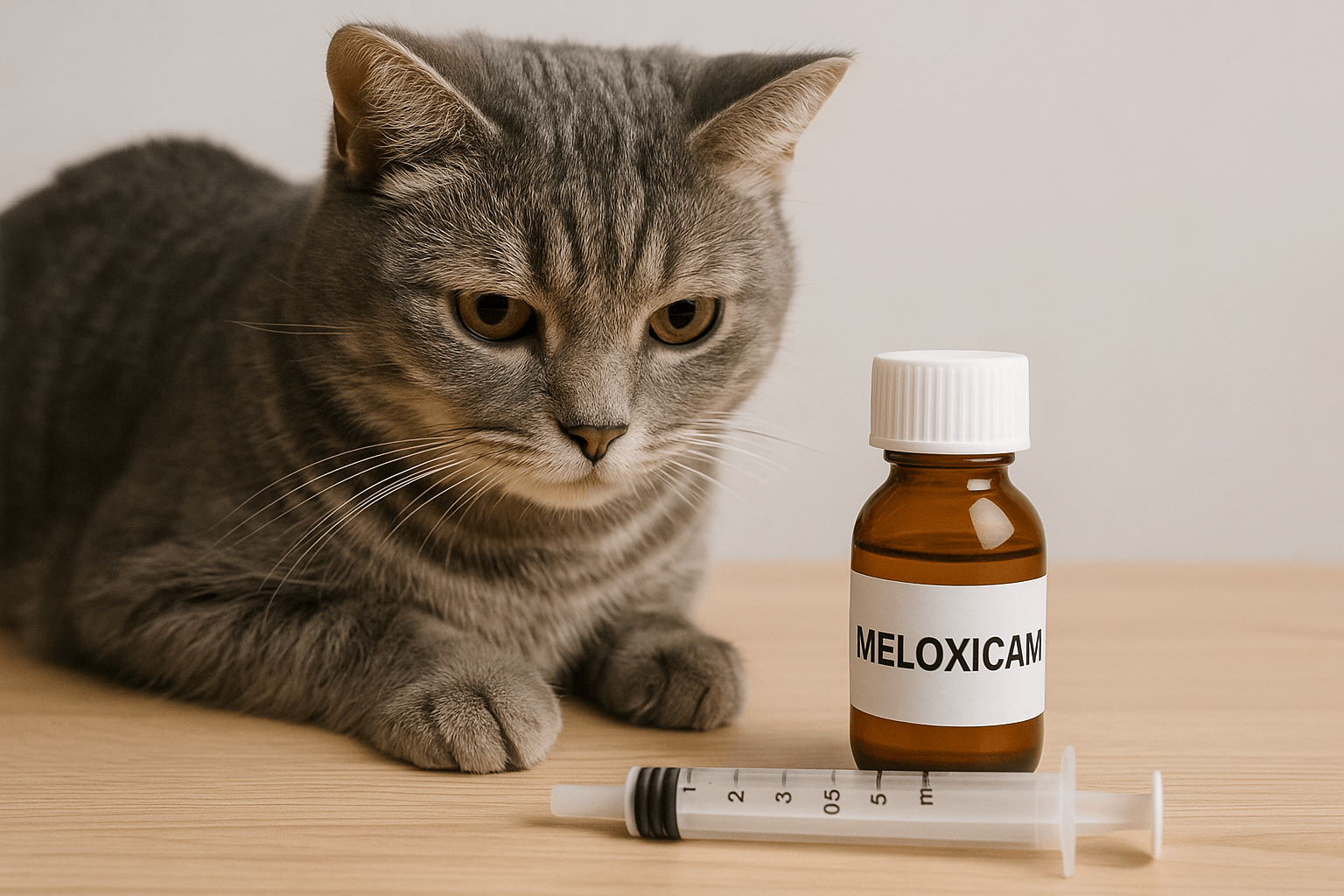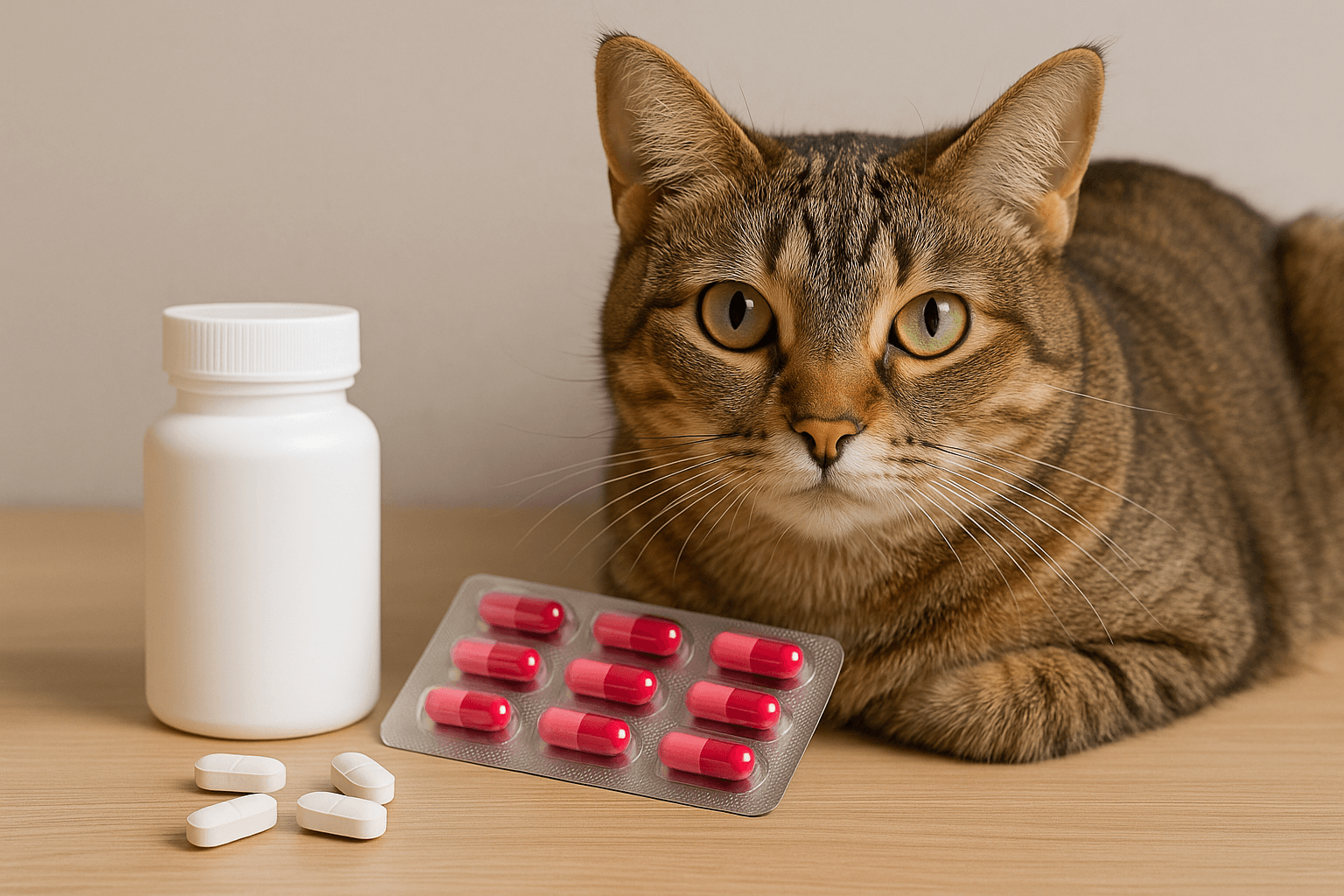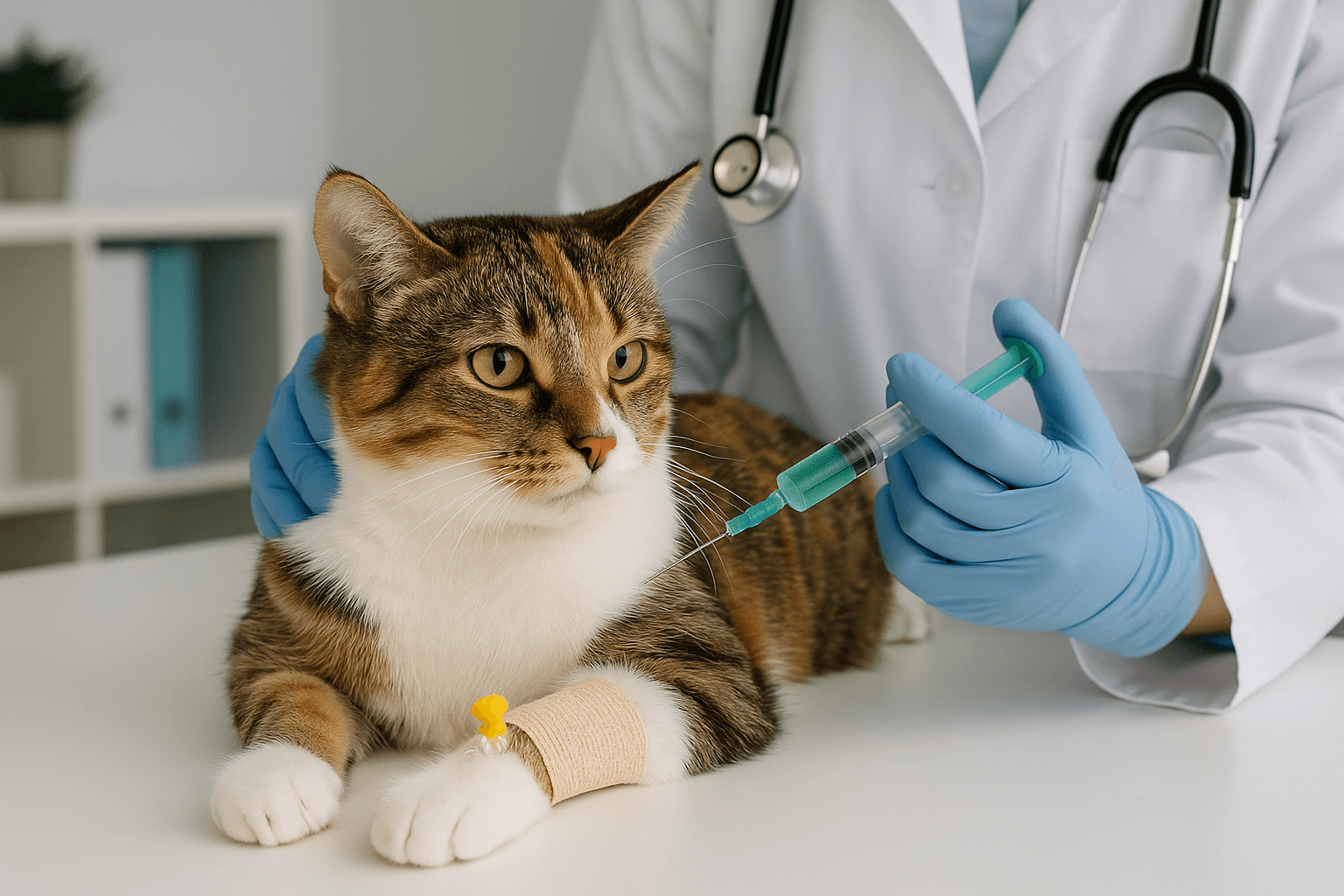Cat Giving Birth: A Guide to Supporting Your Feline Through Labor
Welcoming kittens into the world is an exciting yet delicate process, and as a cat owner, you play a vital role in ensuring everything goes smoothly. While most cats handle labor instinctively, your support and preparation can make all the difference in their comfort and safety. Understanding the stages of labor, recognizing signs of complications, and knowing how to assist when needed are essential for a successful delivery. In this guide, we’ll walk you through everything you need to know about helping your cat give birth, from preparing beforehand to caring for her and her kittens afterward. With patience and care, you can create a safe environment for this miraculous event.
Signs That Your Cat Is Ready to Give Birth
Recognizing the signs that labor is approaching will help you prepare and ensure your cat feels supported. Here are some key indicators that your cat is nearing delivery:
Nesting Behavior : Your cat may start seeking out quiet, secluded spots to create a “nest” for giving birth.
Loss of Appetite : A sudden decrease in appetite is common as labor approaches, often occurring within 24 hours.
Restlessness or Pacing : Increased activity or restlessness may indicate discomfort or the onset of contractions.
Temperature Drop : A cat’s body temperature typically drops to around 99°F (37.2°C) within 12-24 hours before labor begins.
Visible Contractions : Strong abdominal contractions and visible straining signal that labor is imminent.
By observing these signs, you can anticipate when your cat is ready to give birth and provide the necessary support during this critical time.
Stages of Labor in Cats
The birthing process in cats occurs in three distinct stages, each with its own characteristics. Understanding these stages will help you monitor your cat’s progress and identify any potential issues.
Stage 1: Pre-Labor : This stage involves nesting behavior, restlessness, and mild contractions as the body prepares for delivery.
Stage 2: Active Labor : The cat begins pushing, and kittens are born one by one, usually every 10-60 minutes.
Stage 3: Placenta Delivery : After each kitten is born, the mother will deliver the placenta, which she may eat to regain nutrients.
Repeat Process : Stages 2 and 3 repeat for each kitten until the entire litter is delivered.
Completion : Once all kittens are born and placentas are delivered, the mother will focus on cleaning and nursing her kittens.
Understanding these stages ensures you can recognize normal progress and intervene if something seems off.
Check this guide 👉Understanding Cat Pregnancy Tests: Best 7 Expert Tips!
Check this guide 👉How Long Are Cats Pregnant? Best 7 Expert Tips!
Check this guide 👉Can Cats Sense Pregnancy? Best 7 Expert Tips!

What to Do During Labor | What to Avoid During Labor |
|---|---|
Stay calm and observe quietly | Disturb or interfere unnecessarily |
Provide a warm, clean birthing area | Touch or move newborn kittens unless necessary |
Monitor for signs of distress | Panic if there are short breaks between kittens |
Keep emergency supplies nearby | Force the mother to leave her nest |
Contact a vet if complications arise | Ignore prolonged gaps between deliveries |
How to Prepare for Your Cat’s Delivery
Preparation is key to ensuring a smooth and stress-free birthing experience for your cat. Here are some steps to take before labor begins:
Create a Birthing Box : Use a sturdy cardboard box or similar enclosure lined with soft blankets to provide a safe, cozy space.
Gather Supplies : Have clean towels, gloves, scissors (if needed), and a heating pad ready for emergencies.
Consult Your Vet : Schedule a pre-birth checkup to ensure your cat is healthy and discuss what to expect.
Learn Emergency Signs : Familiarize yourself with warning signs like prolonged labor or excessive bleeding that require immediate vet attention.
Minimize Stressors : Keep the birthing area quiet and free from disturbances, such as other pets or loud noises.
By preparing ahead of time, you can create a supportive environment that promotes a successful delivery.
Common Complications During Cat Birth and How to Handle Them
While many births proceed without issues, complications can arise. Knowing how to respond can make a significant difference in your cat’s health and the survival of her kittens.
Prolonged Labor : If more than 60 minutes passes between kittens without progress, contact your vet immediately.
Retained Placenta : Failure to pass all placentas can lead to infection; watch closely and seek veterinary advice if unsure.
Kitten Stuck in Birth Canal : Gently assist only if trained; otherwise, call your vet for professional help.
Weak or Non-Responsive Kittens : Rub the kitten gently with a towel to stimulate breathing, and clear mucus from its nose.
Excessive Bleeding : Significant blood loss requires urgent veterinary intervention to prevent life-threatening complications.
Being prepared for these scenarios ensures you can act quickly and effectively to protect both mother and kittens.
Ensuring the Health and Well-Being of Newborn Kittens
Once the kittens are born, your role shifts to ensuring they receive proper care during their fragile first weeks. Here are some essential steps to care for newborn kittens:
Keep Them Warm : Use a heating pad or warm blanket to maintain a stable temperature, as kittens cannot regulate their body heat.
Monitor Feeding : Ensure each kitten is nursing regularly; healthy kittens will gain weight steadily in the first few days.
Stimulate Elimination : Gently rub the kittens’ genital areas with a warm, damp cloth after feeding to encourage urination and defecation.
Check for Dehydration : Look for signs like dry gums or lethargy, and consult a vet if you suspect dehydration.
Limit Handling : Minimize handling by humans in the first week to allow the mother to bond with her kittens.
By following these guidelines, you can help ensure the kittens grow strong and healthy under their mother’s care.
Recognizing When Professional Help Is Necessary
While most births go smoothly, there are situations where veterinary intervention is critical. Knowing when to seek help can save your cat’s life and ensure the safety of her kittens.
Excessive Straining Without Progress : If your cat strains for more than 30 minutes without delivering a kitten, contact your vet immediately.
Fever or Lethargy : A fever or unusual lethargy in the mother could indicate an infection or other serious issue.
Green Discharge Before Birth : A green vaginal discharge before the first kitten is delivered may signal trouble.
Kittens Born Weak or Not Breathing : If kittens are not breathing or appear weak, seek emergency care right away.
Mother Rejecting Kittens : If the mother refuses to nurse or care for her kittens, professional guidance is necessary.
Prompt veterinary attention ensures that complications are addressed quickly, protecting both mother and kittens.
Supporting Your Cat’s Recovery After Giving Birth
After giving birth, your cat needs time to recover physically and emotionally. Providing proper postpartum care helps her regain strength and bond with her kittens. Here are some tips:
Provide Nutritious Food : Offer high-quality, nutrient-rich food to replenish her energy and support milk production.
Ensure Fresh Water : Keep a bowl of clean water nearby at all times to prevent dehydration.
Monitor Her Health : Watch for signs of infection, such as foul-smelling discharge, swelling, or refusal to eat.
Allow Rest and Privacy : Give her space to rest and care for her kittens without unnecessary disturbances.
Schedule a Postpartum Check-Up : Visit the vet within a week of delivery to ensure her recovery is on track.
By prioritizing your cat’s well-being, you can help her transition smoothly into motherhood and enjoy this special time with her litter.
Frequently Asked Questions About Cat Giving Birth
How long does labor last for a cat?
Labor typically lasts 2-6 hours, but it can vary depending on the size of the litter and individual circumstances.
What should I do if my cat ignores her kittens after birth?
Encourage her gently by placing the kittens near her nipples. If she continues ignoring them, consult your vet for guidance.
Can I leave my cat alone during labor?
It’s best to check on her periodically while giving her space, especially if she seems comfortable and relaxed.
How many kittens should I expect in a litter?
Litter sizes range from 1 to 8 kittens, with an average of 4-6 depending on the breed and age of the mother.
Should I help cut the umbilical cord?
Only intervene if the cord doesn’t break naturally during delivery, and always use sterilized scissors if necessary.
Supporting Your Cat Through Motherhood
Helping your cat give birth is a rewarding experience that requires patience, preparation, and attentiveness. By understanding the stages of labor, recognizing potential complications, and providing a calm, supportive environment, you can ensure the best possible outcome for both mother and kittens. Remember, your role is to assist—not interfere—unless absolutely necessary. With proper care and love, your cat will thrive in her new role as a mother, and you’ll have the joy of watching her bond with her adorable litter.
Cat Fever Treatment: Best 7 Expert Tips! Discover expert advice on identifying, managing, and treating fever in cats to ensure their quick recovery and well-being.
Understanding Meloxicam for Cats: Best 7 Expert Tips! Learn how to safely administer meloxicam, manage side effects, and ensure your cat's comfort with expert advice on feline pain relief.
Amoxicillin for Cat UTI: Best 7 Expert Tips! Discover safe usage, dosage guidelines, and expert advice on treating feline urinary tract infections effectively with amoxicillin.
Understanding Cat Cancer Treatment: Best 7 Expert Tips! Discover expert advice on managing feline cancer, from early detection to treatment options, ensuring your cat’s health and comfort.





